Securing your trailer to the hitch is a critical safety step that ensures your trailer remains firmly attached during transit. Whether you’re towing a small utility trailer or a larger travel trailer, using the appropriate equipment and techniques can prevent accidents and damage.
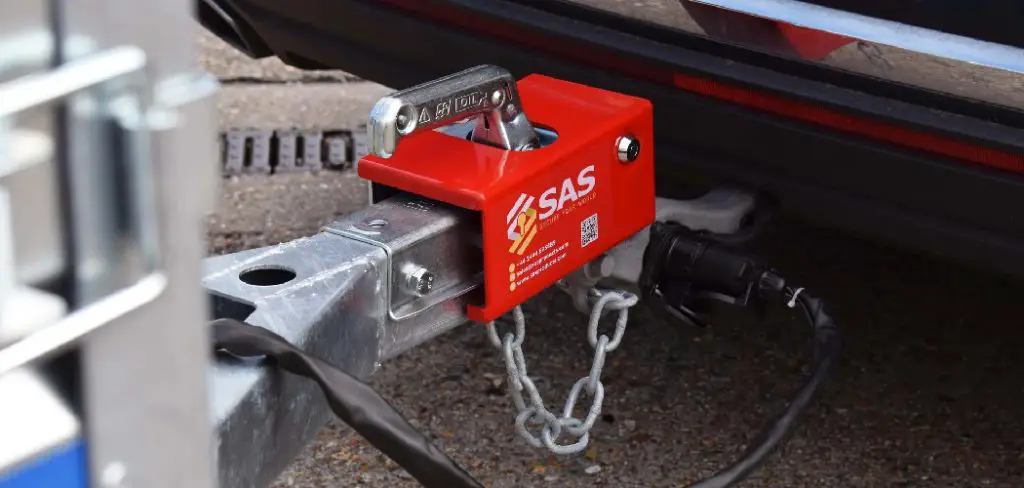
This guide on how to lock trailer to hitch will provide detailed instructions on how to lock your trailer to the hitch properly, giving you peace of mind for secure and worry-free travel.
What is a Trailer Hitch?
A trailer hitch is a device that attaches to the chassis of your vehicle and allows you to tow another vehicle, such as a trailer. It typically consists of a ball mount, coupler, and receiver, which work together to enable safe towing.
It is essential to choose the right trailer hitch for your vehicle to ensure proper fit and towing capacity. Consult with a professional or refer to your vehicle’s owner’s manual for guidance on selecting the appropriate hitch.
Needed Materials
Before you begin locking your trailer to the hitch, make sure you have the necessary materials on hand. These include:
Trailer Hitch Lock or Pin and Clip:
A trailer hitch lock or pin and clip are essential tools for securing your trailer to the hitch. A hitch lock is a specialized tool that goes through the receiver, preventing anyone from removing the hitch from your vehicle. A pin and clip also secure the ball mount to the receiver but do not provide as much protection against theft.
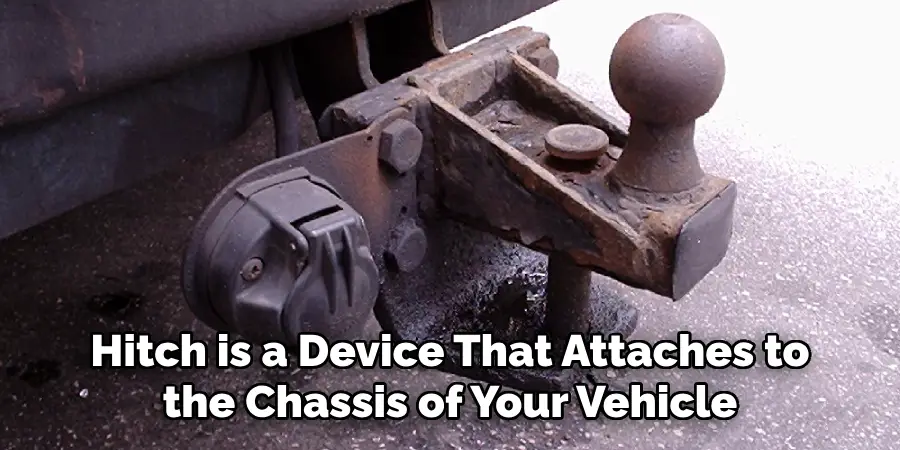
Trailer Hitch Coupler Lock:
This type of lock goes on the coupler, which connects to the ball mount. It prevents someone from detaching the trailer from your vehicle. Some coupler locks come with a built-in locking mechanism, while others require a separate padlock.
Chocks or Wheel Blocks:
Chocks or wheel blocks help stabilize the trailer, preventing it from rolling while you are securing it to the hitch.
8 Simple Methods on How to Lock Trailer to Hitch
Method 1: Install the Ball Mount onto the Receiver:
- Place the ball mount on top of the receiver and make sure it is aligned correctly.
- Insert a pin through the receiver and ball mount.
- Secure it in place with a clip or hitch lock.
- Ensure that the pin and clip or hitch lock are snugly in place.
Method 2: Attach the Coupler to the Ball Mount:
- Raise your trailer’s coupler using a tongue jack so it is high enough for you to back your vehicle underneath it.
- Line up the coupler with the ball on top of your ball mount.
- Lower the coupler onto the ball until it rests securely on top.
- Make sure that there is no gap between the bottom of the coupler and the top of the ball.
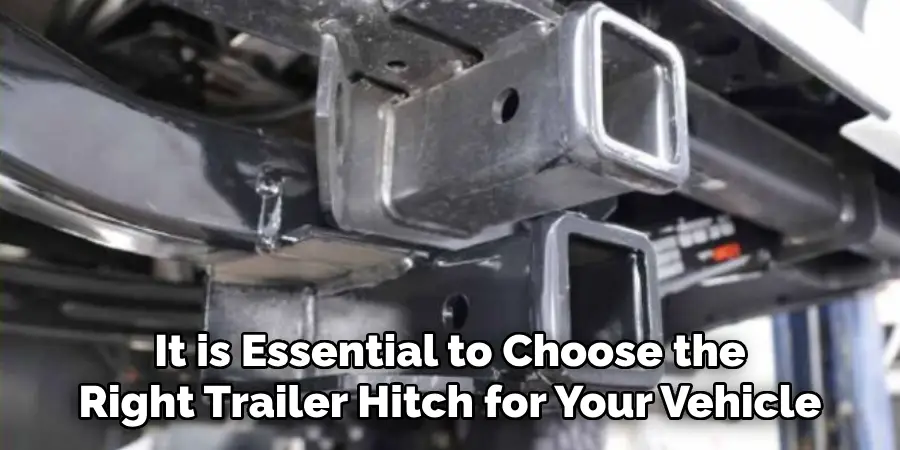
Method 3: Use a Trailer Hitch Coupler Lock:
- Place a small padlock through both holes at the end of your coupler lock.
- Ensure that the lock is on tight and cannot be moved or tampered with easily.
- This method will prevent someone from detaching your trailer from your vehicle.
Method 4: Apply a Trailer Hitch Lock:
- Slide the hitch lock into place on the receiver.
- Make sure to line up any grooves or keyholes to ensure proper placement.
- Insert the pin or key, depending on the type of hitch lock you have.
- Securely tighten it in place.
- This method prevents anyone from removing the hitch from your vehicle, providing added security against theft.
Method 5: Use a PIN and Clip:
- Place the pin through the hole in the receiver.
- Align it with the hole in the ball mount.
- Securely tighten it into place using a clip or lock.
- This method is not as secure as using a hitch lock but still provides some level of protection against someone removing your trailer from your vehicle.
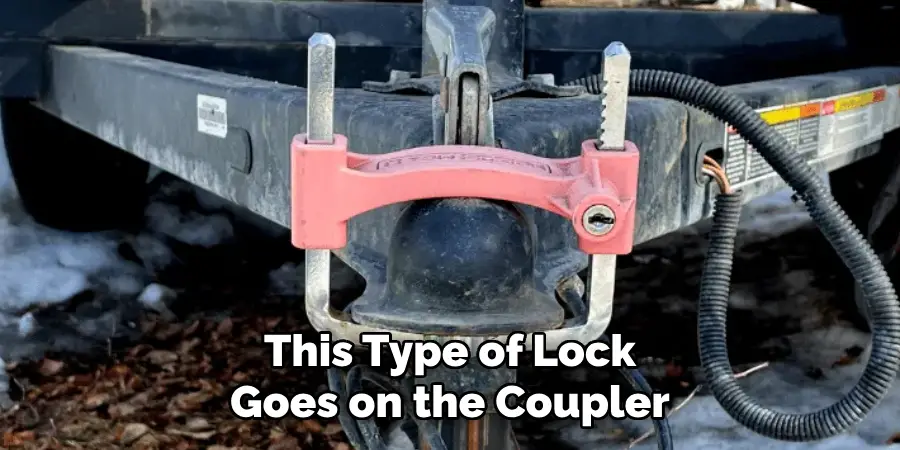
Method 6: Add Extra Security with a Hitch Coupler Lock:
- Place the coupler lock onto the coupler and secure it using a padlock or built-in locking mechanism.
- This method adds an extra layer of protection, preventing anyone from removing your trailer from the ball mount.
- Make sure the lock is securely in place and cannot be easily manipulated or removed.
Method 7: Use Wheel Chocks:
- Place wheel chocks on both sides of your trailer tires to prevent them from rolling.
- This will make securing your trailer to the hitch easier and safer, as it will not move while you are working on it.
- Ensure that the chocks are placed securely and cannot be easily moved.
Method 8: Complete a Final Check:
- Once your trailer is securely attached to the hitch, give it a final check by slightly rocking the trailer back and forth.
- If everything is properly locked in place, there should be no movement between the trailer and your vehicle.
- If you feel any slack or movement, recheck all the locking mechanisms to ensure they are securely in place.
- Once you have completed this final check, you can safely hit the road knowing your trailer is securely attached to your vehicle.
Following these eight simple methods on how to lock trailer to hitch will ensure safe and worry-free towing. Remember, it is always better to take the extra time to secure your trailer properly than risk accidents or damage while on the road. Happy and safe travels!
Do You Need to Get Help for Your Trailer Locking System?
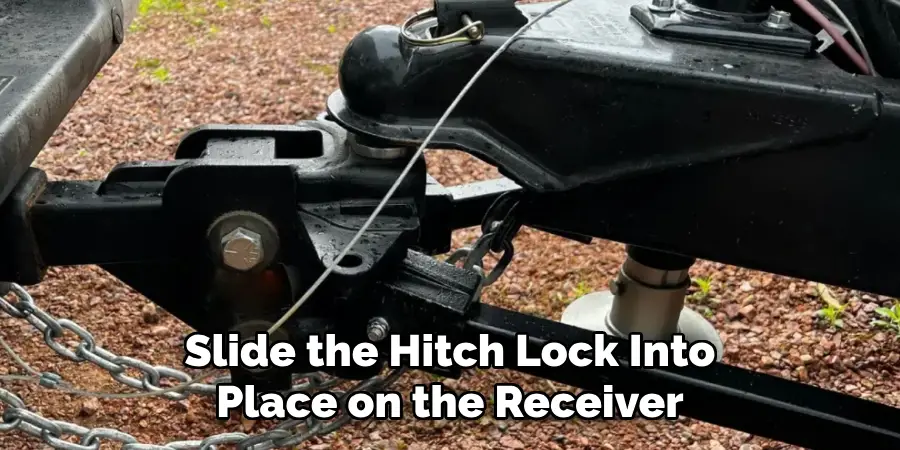
Securing your trailer properly is crucial for ensuring your safety on the road as well as the safety of others. If you are ever in doubt about your trailer locking system or its installation, seeking professional help can be invaluable. Professionals are experienced and knowledgeable about the various types of trailer locks available and can recommend the best options for your specific needs. They can also assist with installation, ensuring that your locking system is fitted correctly and securely.
Additionally, if you encounter any issues or unusual noises while towing, it’s essential to consult with an expert to identify and resolve the problem promptly. Trusting the expertise of professionals can save you time and prevent potential hazards, giving you peace of mind while traveling.
Additional Tips
- Always double-check that all locking mechanisms are securely in place before hitting the road.
- If you frequently tow trailers, consider investing in high-quality locking systems for added security and peace of mind.
- Regularly inspect your trailer locks for any signs of wear or damage and replace them if needed.
- Educate yourself on different types of trailer locks and their features to choose the best one for your needs. For example, some hitch locks have a weatherproof design, making them ideal for outdoor storage.
- When storing your trailer, make sure to lock it securely using all available locking systems to prevent theft or unauthorized use.
- Some insurance policies offer discounts for having secure trailer locking systems, so be sure to check with your provider.
- Always follow the manufacturer’s instructions when installing and using trailer locks to ensure their proper function.
- Lastly, never leave your trailer unattended while attached to your vehicle, as this can make it an easy target for thieves. If you need to leave it, detach it from your vehicle and secure it in a locked storage facility.
By following these tips and ensuring proper maintenance of your trailer’s locking system, you can have worry-free travels and peace of mind knowing that your trailer is secure. So, always remember to take the extra time to properly lock your trailer to the hitch before hitting the road. Happy towing!
Frequently Asked Questions
Q1: What is the Difference Between a Hitch Lock and a Coupler Lock?
A1: A hitch lock goes through the receiver, preventing anyone from removing the hitch from your vehicle. A coupler lock goes on the coupler, which connects to the ball mount and prevents someone from detaching the trailer from your vehicle.
Q2: Can I Use a Hitch Lock Instead of a Coupler Lock?
A2: It is recommended to use both a hitch lock and a coupler lock for added security. However, if you can only choose one, a coupler lock is more effective in preventing trailer theft.
Q3: Do I Need to Lock My Trailer Even When It Is Not Attached to My Vehicle?
A3: Yes, it is still essential to lock your trailer even when it is not attached to your vehicle. This will prevent anyone from hitching it onto their own vehicle and stealing it.
Q4: Can I Use Any Type of Padlock for My Trailer Hitch Lock?
A4: It is recommended to use a heavy-duty padlock with a shackle diameter of at least 5/16 inches for added protection against tampering. Additionally, make sure the padlock is weather-resistant to avoid rusting and difficulty in opening. always opt for a quality lock from a reputable brand for added security.
Conclusion
Knowing how to lock trailer to hitch properly is crucial for safe and worry-free towing. By following these eight simple methods and using the appropriate equipment, you can ensure that your trailer remains securely attached during transit. Always remember to double-check all locks and connections before hitting the road for added peace of mind. Safe travels!
